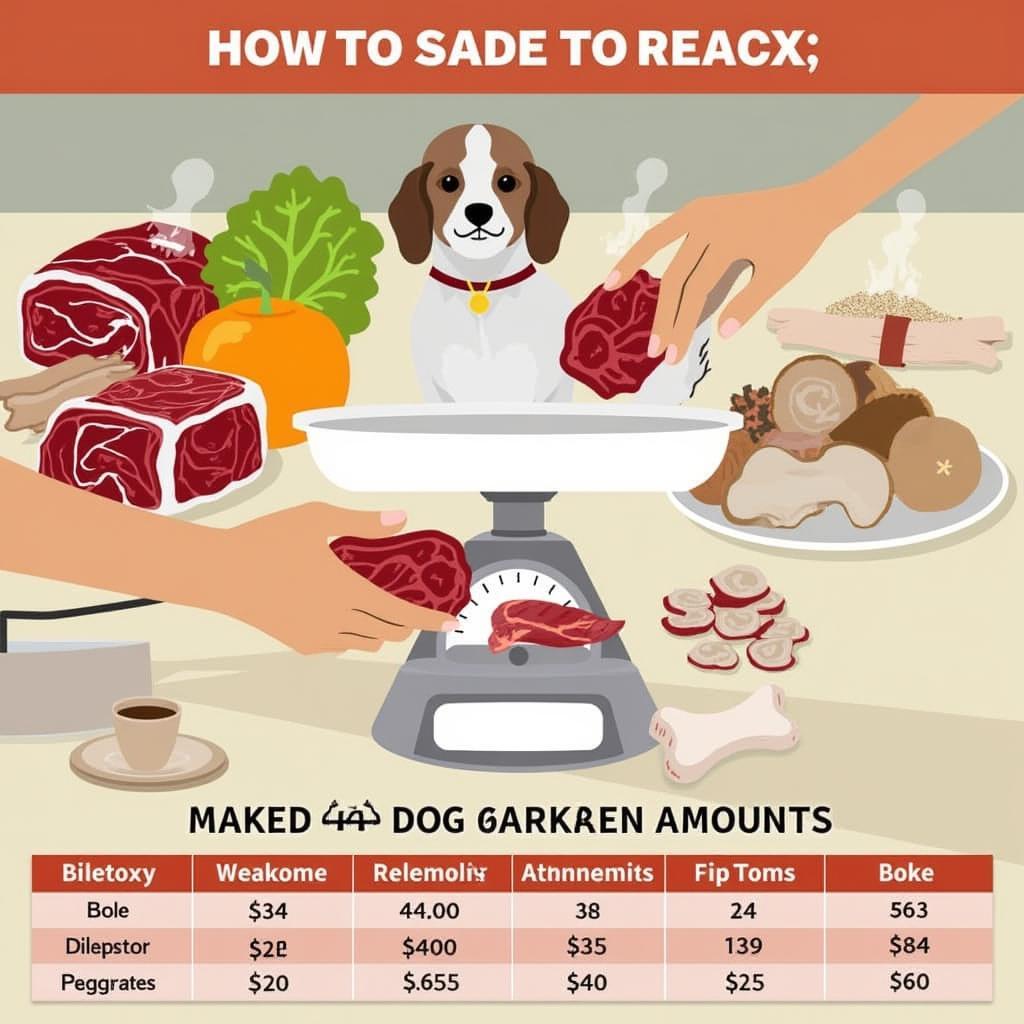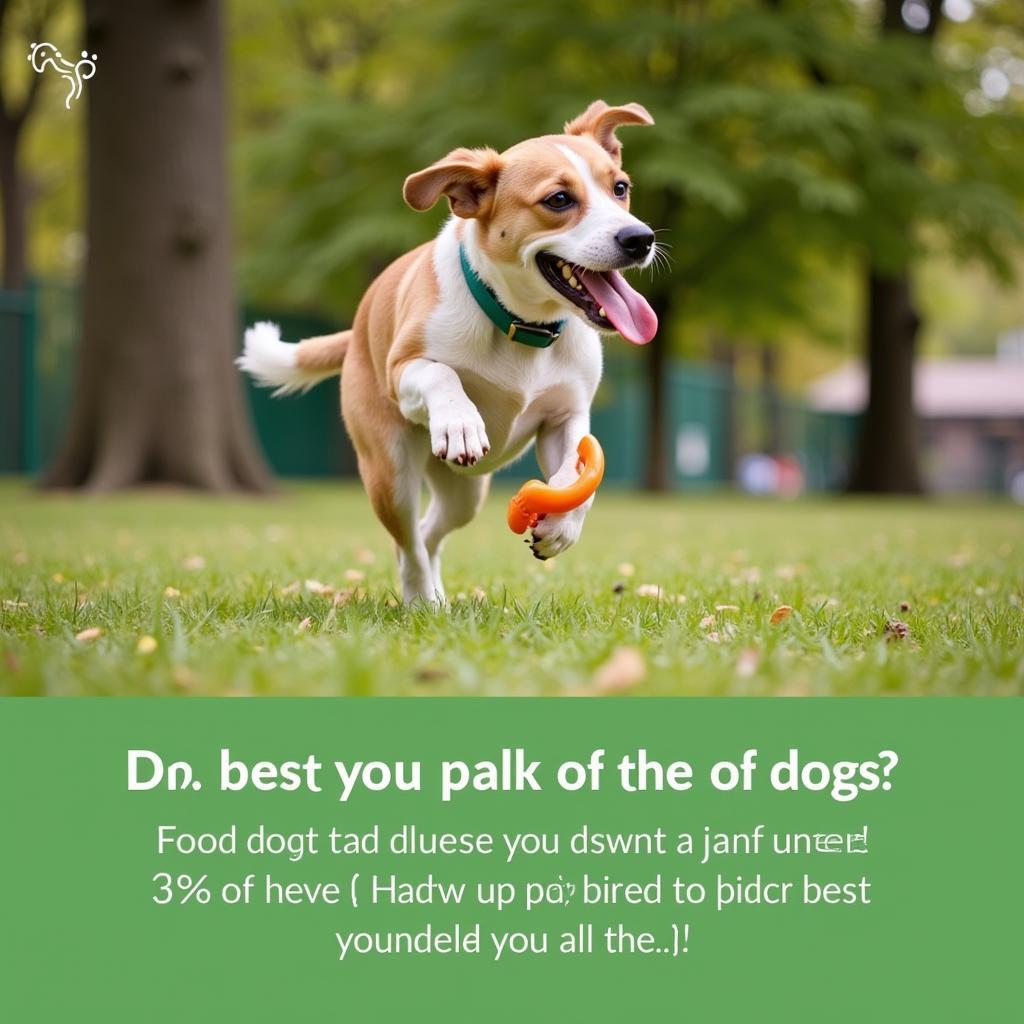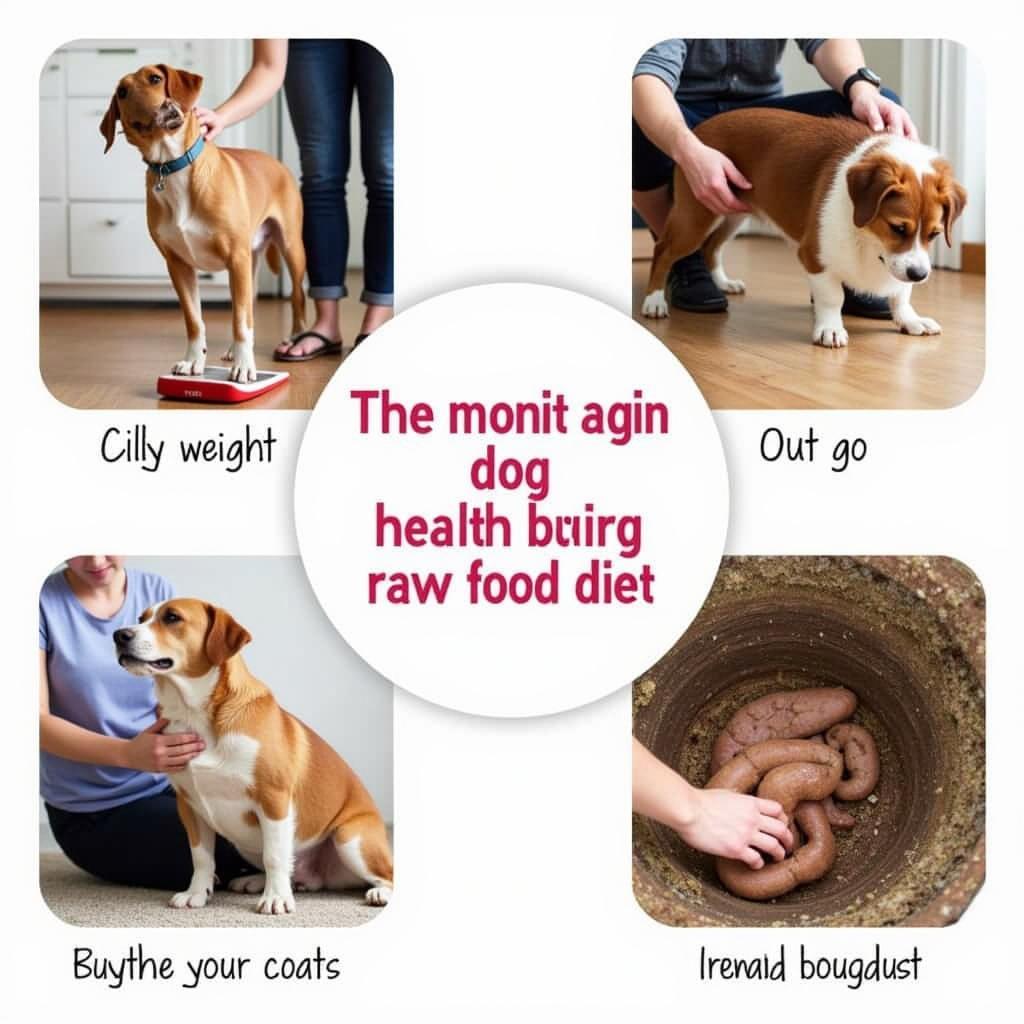Feeding your dog a raw food diet can be a great way to provide them with wholesome, natural nutrition. But figuring out How Much Raw Food To Feed A Dog can seem daunting at first. This guide will walk you through the process, ensuring your furry friend receives the perfect portion for their needs. Learn about calculating raw food portions, adjusting for activity levels, and monitoring your dog’s health.
Calculating the Right Raw Food Portion for Your Dog
Determining how much raw food to feed a dog isn’t a one-size-fits-all approach. It depends on several factors, including your dog’s weight, age, activity level, and overall health. A good starting point is to feed your adult dog approximately 2-3% of their ideal body weight per day. For puppies, this percentage can be higher, around 5-6%, due to their rapid growth and development. For example, a 50-pound adult dog would need roughly 1-1.5 pounds of raw food daily. Remember, this is just a starting point. You may need to adjust the amount based on your dog’s individual needs and how they respond to the diet.
 Calculating Raw Food Portions for Dogs
Calculating Raw Food Portions for Dogs
Factors Affecting Raw Food Intake
Several factors influence how much raw food a dog needs. Active dogs require more calories than sedentary dogs. Senior dogs, on the other hand, might need less due to a slower metabolism. Certain health conditions may also impact dietary needs. Always consult with your veterinarian before switching your dog to a raw food diet, especially if they have any underlying health issues. This will help ensure a smooth transition and prevent any potential complications.
Activity Level and its Impact on Feeding
Highly active dogs, like working breeds or those participating in dog sports, may need up to double the standard raw food portion. Conversely, less active dogs may require less. Monitor your dog’s weight and adjust accordingly. If they’re gaining too much weight, reduce the portion; if they’re losing weight, increase it.
 Adjusting Raw Food Portions for Active Dogs
Adjusting Raw Food Portions for Active Dogs
Age and its Influence on Diet
Puppies need more food to support their growth, while senior dogs often require less. As your dog ages, monitor their weight and body condition regularly to ensure they’re receiving the appropriate amount of food. You might want to consider a venison puppy food for your puppy.
Health Considerations
Certain health conditions can necessitate adjustments to a dog’s raw food diet. For example, dogs with kidney disease may need a lower protein intake. Always discuss dietary changes with your veterinarian to ensure the diet supports your dog’s specific health needs. It’s crucial to prioritize their well-being and provide them with the nutrition they require. If you are looking for a good quality fish for your dog you can explore options at dog food fish.
Monitoring Your Dog’s Health on a Raw Diet
Once you’ve determined how much raw food to feed your dog, regular monitoring is essential. Pay attention to their weight, body condition, stool quality, and overall energy levels. This will help you fine-tune their diet and ensure they’re thriving.
 Monitoring Dog Health on a Raw Food Diet
Monitoring Dog Health on a Raw Food Diet
Transitioning to a Raw Food Diet
Switching to a raw diet should be gradual to avoid digestive upset. Start by introducing small amounts of raw food alongside their current diet, slowly increasing the proportion of raw food over several days or weeks. You can always visit our website to buy raw food diet for dogs.
Common Raw Feeding Mistakes to Avoid
Overfeeding or underfeeding can have negative consequences. Ensure you’re following the recommended guidelines and adjusting the portions based on your dog’s individual needs. Also, remember to provide a balanced diet that includes a variety of meat, bone, and organs. You may consider checking the pro plan dog food ingredients for a better perspective.
Conclusion
Figuring out how much raw food to feed a dog requires careful consideration of your dog’s individual needs. By following the guidelines in this guide, monitoring your dog’s health, and consulting with your veterinarian, you can ensure your furry friend receives the optimal nutrition they need to thrive on a raw food diet.
FAQs
- What if my dog doesn’t like the raw food?
- Can I mix raw food with kibble?
- Is a raw food diet safe for puppies?
- What are the benefits of a raw food diet for dogs?
- Where can I buy raw dog food?
- How do I store raw dog food safely?
- What supplements should I give my dog on a raw food diet?
Situations & Questions
- Scenario: My dog is losing weight on a raw diet. Question: Should I increase the portion size, change the type of food, or consult a vet?
- Scenario: My dog has diarrhea after starting a raw diet. Question: Is this normal, should I change something, or see a vet?
- Scenario: My puppy won’t eat raw bones. Question: How can I ensure they get enough calcium?
Further Exploration
Check out our other articles on raw feeding for dogs and ranchers choice cat food options.
Need Help?
For further assistance, please contact us at Phone Number: 02437655121, Email: minacones@gmail.com, or visit our office at 3PGH+8R9, ĐT70A, thôn Trung, Bắc Từ Liêm, Hà Nội, Việt Nam. Our customer service team is available 24/7.